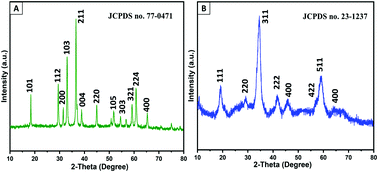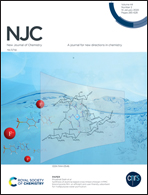Evaluating an effective electrocatalyst for the rapid determination of triptan drug (Maxalt™) from (mono and binary) transition metal (Co, Mn, CoMn, MnCo) oxides via electrochemical approaches†
Abstract
In this article, an ultra sensitive and selective electrochemical sensor for the detection of Rizatriptan benzoate (RZB) was reported. The rationally designed transition metal oxides (specifically: Co and Mn) have been synthesized using a facile one-step hydrothermal method. The structural and electroanalytical properties of the prepared transition metal oxide (TMO) microstructures were examined using transmission electron microscopy (TEM), X-ray diffraction (XRD), X-ray photoelectron spectroscopy (XPS), cyclic voltammetry (CV), and differential pluse voltammetry (DPV). The prepared microstructures such as Co3O4 polyhedrons (PHs), Mn3O4 microcubes (MCs), MnCo2O4 micro flowers (MFs) and CoMn2O4 hollow microspheres (HMs) were employed for the quantification of triptan drug Rizatriptan benzoate (RZB). As the results show, the CoMn2O4 HM modified glassy carbon electrode shows an excellent oxidation curve for the detection of RZB, which also retains a wider linear range of 0.015–2.35 μM, and 11.62–732.12 μM, with the minimum detection limit of 8.19 nM. The viability of the sensor fabrication has also been reviewed on a pharmaceutical sample (Maxalt™ oral tablets) and a biotic substance (blood serum), and considerable spike recoveries were also obtained.



 Please wait while we load your content...
Please wait while we load your content...